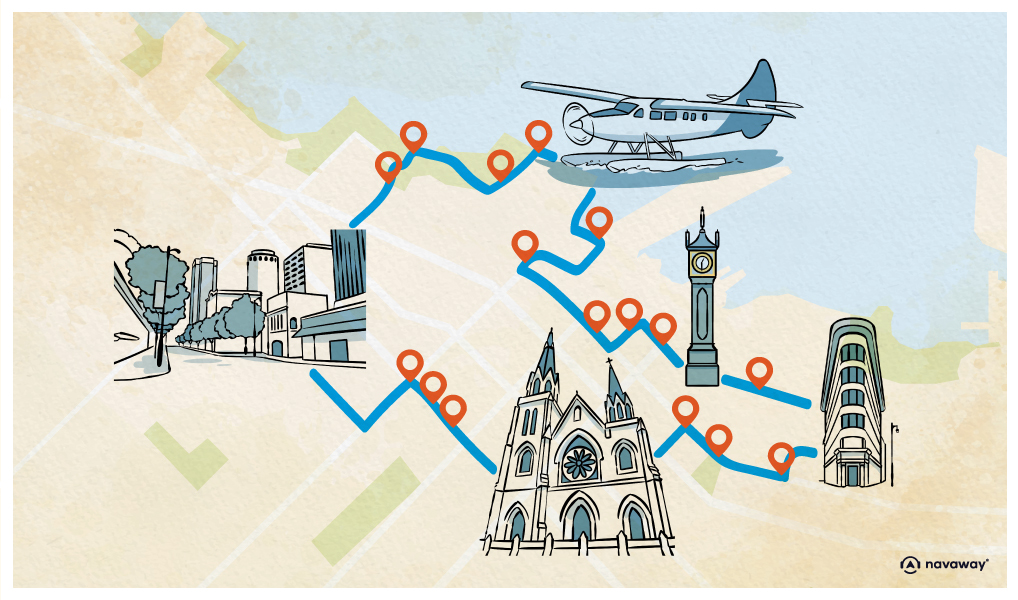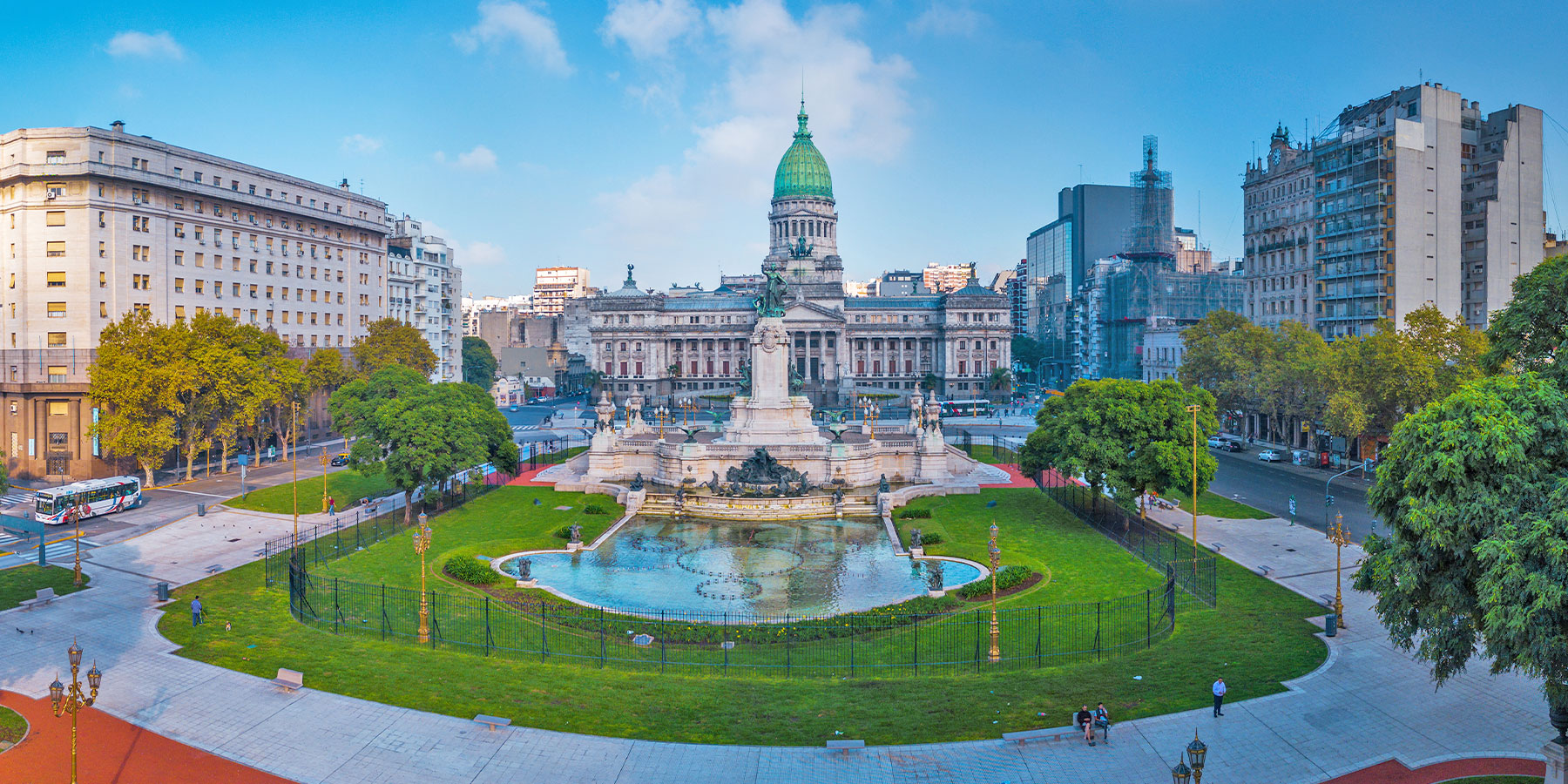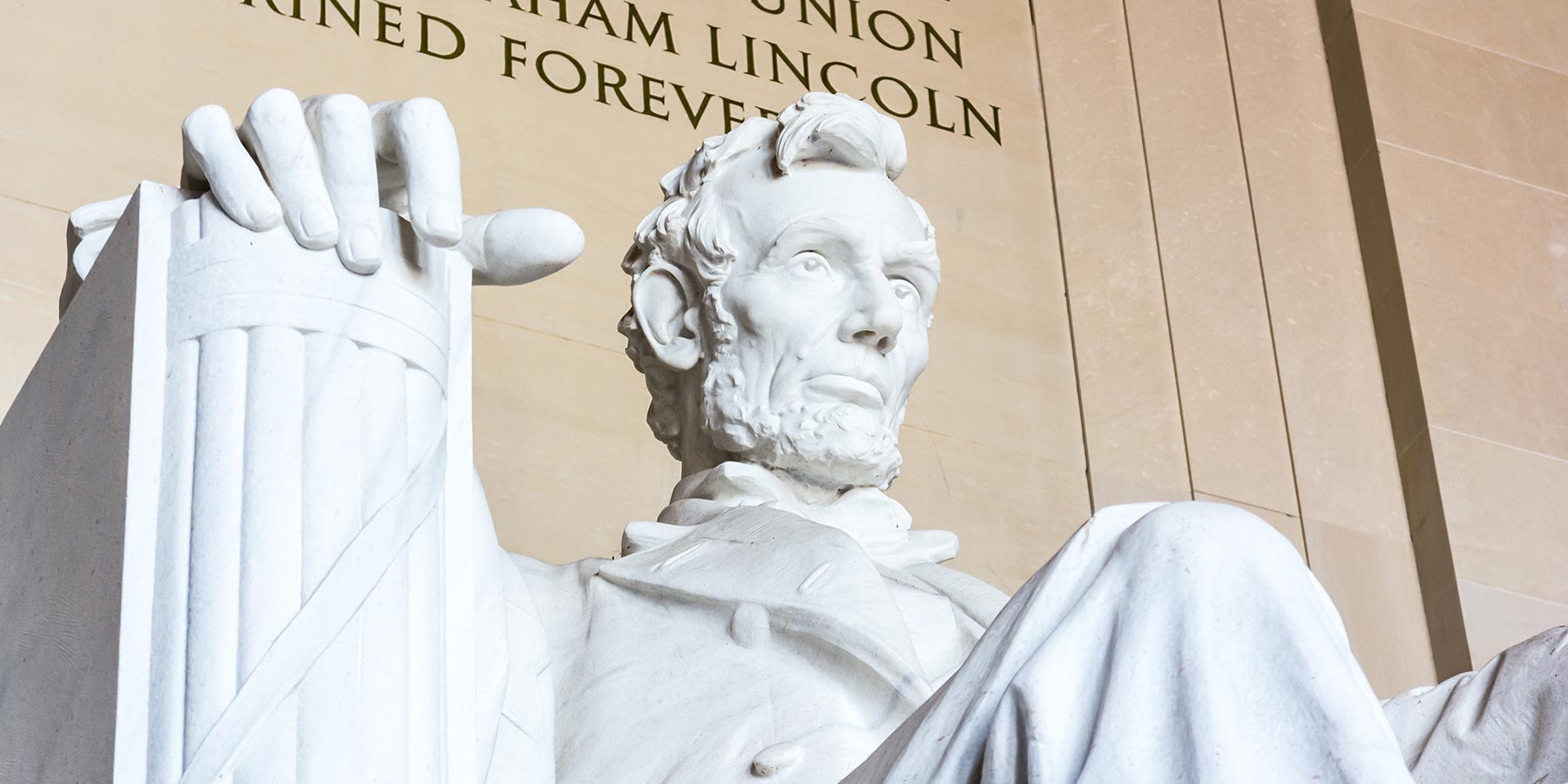
Marine building

This point of interest is available as audio on the tour: Visit Vancouver, Where mountains meet ocean
I’d like to draw your attention to the building on your right. It’s the sublime 1930 Marine Building. You’re looking at one of Canada’s finest examples of Art Deco. Hard to see from this close up, it’s true, yet while you can’t admire the carved details at the top of its façade, you can already appreciate its incredible front door. At the time of its construction, McCarter Nairne, the architect office in charge of the project, stated that they wanted to create, and I quote: “some great crag rising from the sea, clinging with sea flora and fauna, tinted in sea-green, touched with gold”. The huge brass doors in front of you repeat the codes of the marine world, with shells, seaweed, turtles and seahorses, but also of flora and fauna, with migratory birds flying over the entrance. All around the arch, you can admire bas-reliefs describing the history of transport and the discovery of the Pacific coast. These decorations highlight Vancouver’s role as a global maritime and rail hub. The building was designed by Lieutenant-Colonel Hobbs, who was convinced that the opening of the Panama Canal would boost the influence of Vancouver’s harbor. The city therefore needed a building to match, in the same vein as the Chrysler building that had just been built in New York. You are lucky because your discovery doesn’t stop here, as the first two floors are open to the public. The entrance hall is breathtaking, with wall lights in the shape of plaster ships, riding waves carved into the walls. The elevators are equally dazzling, with their marquetry of 12 species of hardwood. At the apex of the building’s life, hostesses in sailor suits would escort you to the elevators, which were then the fastest in the city. Such beauty certainly hasn’t escaped Hollywood, which can’t get enough of the extraordinary decor of Vancouver’s Marine Building. You’ll find it in the superhero saga Fantastic 4, or in the film Blade Trinity. It’s also the home of the Daily Planet in the popular 2000s Canadian TV series Smallville. I strongly recommend exploring the interior in every detail. The building is classified as a Canadian historic resource.


Discover Vancouver with app
An interactive guide through the most beautiful streets, squares, and districts
20 fun audioguides full of historical facts, anecdotes, and legends





Comments